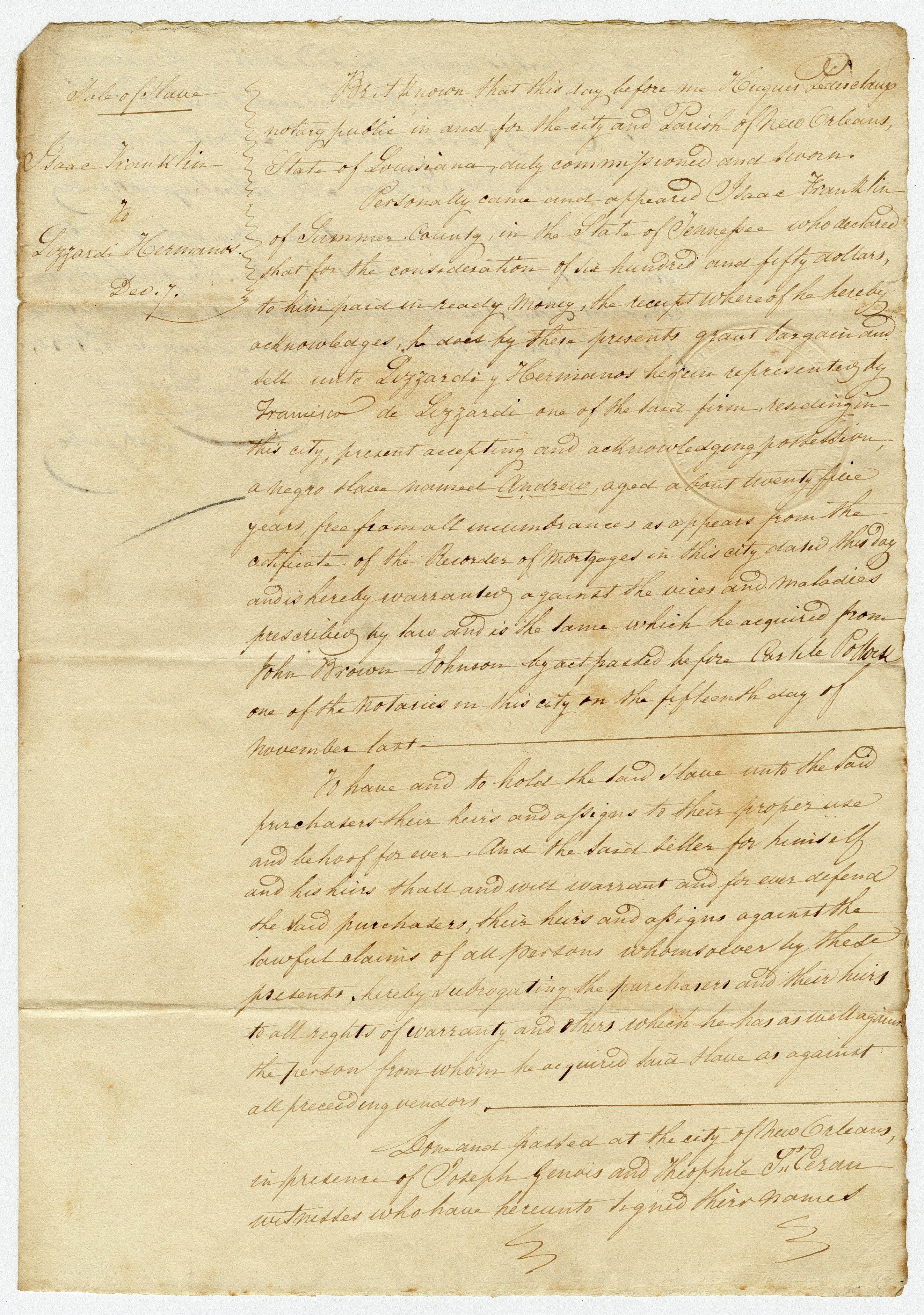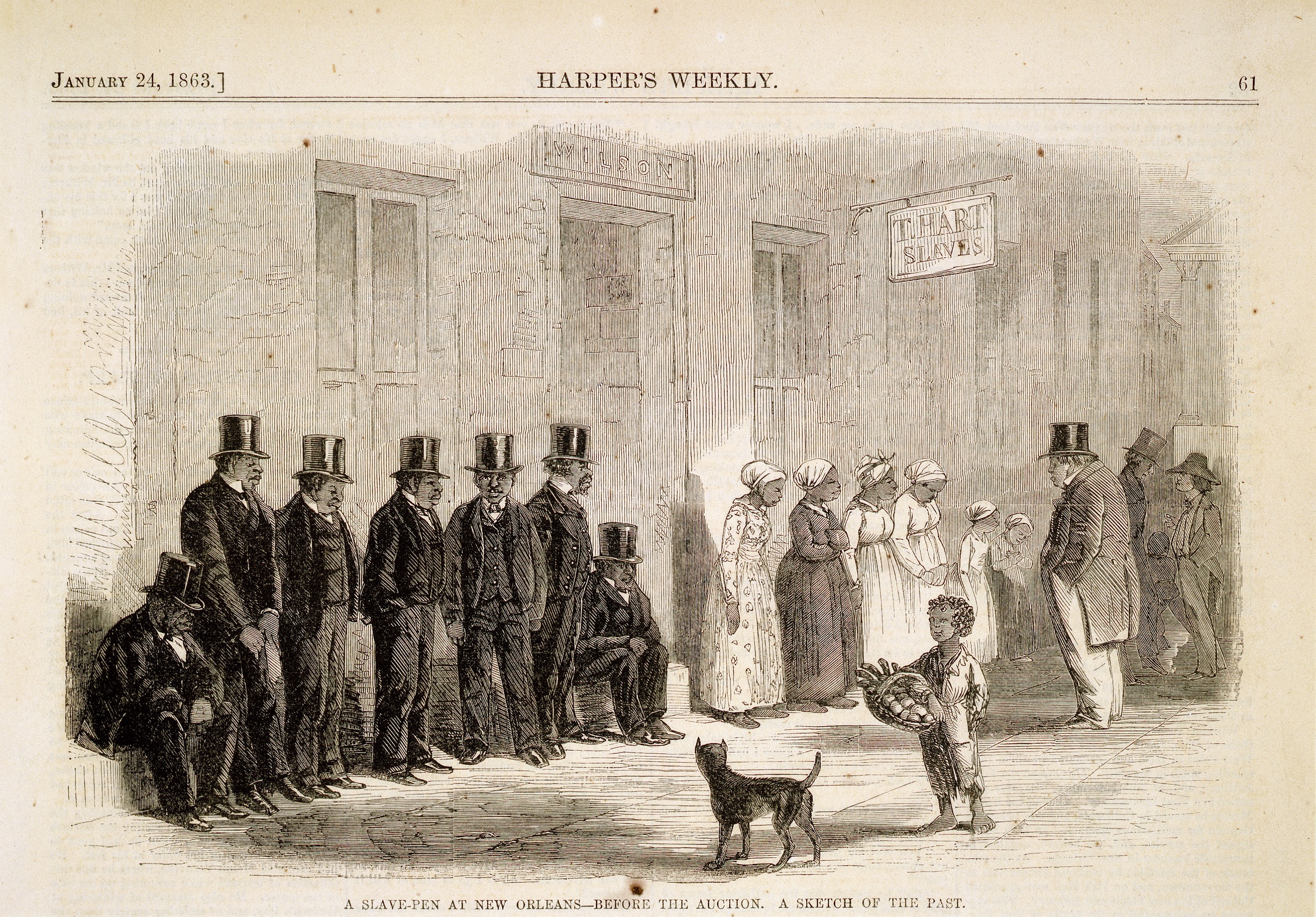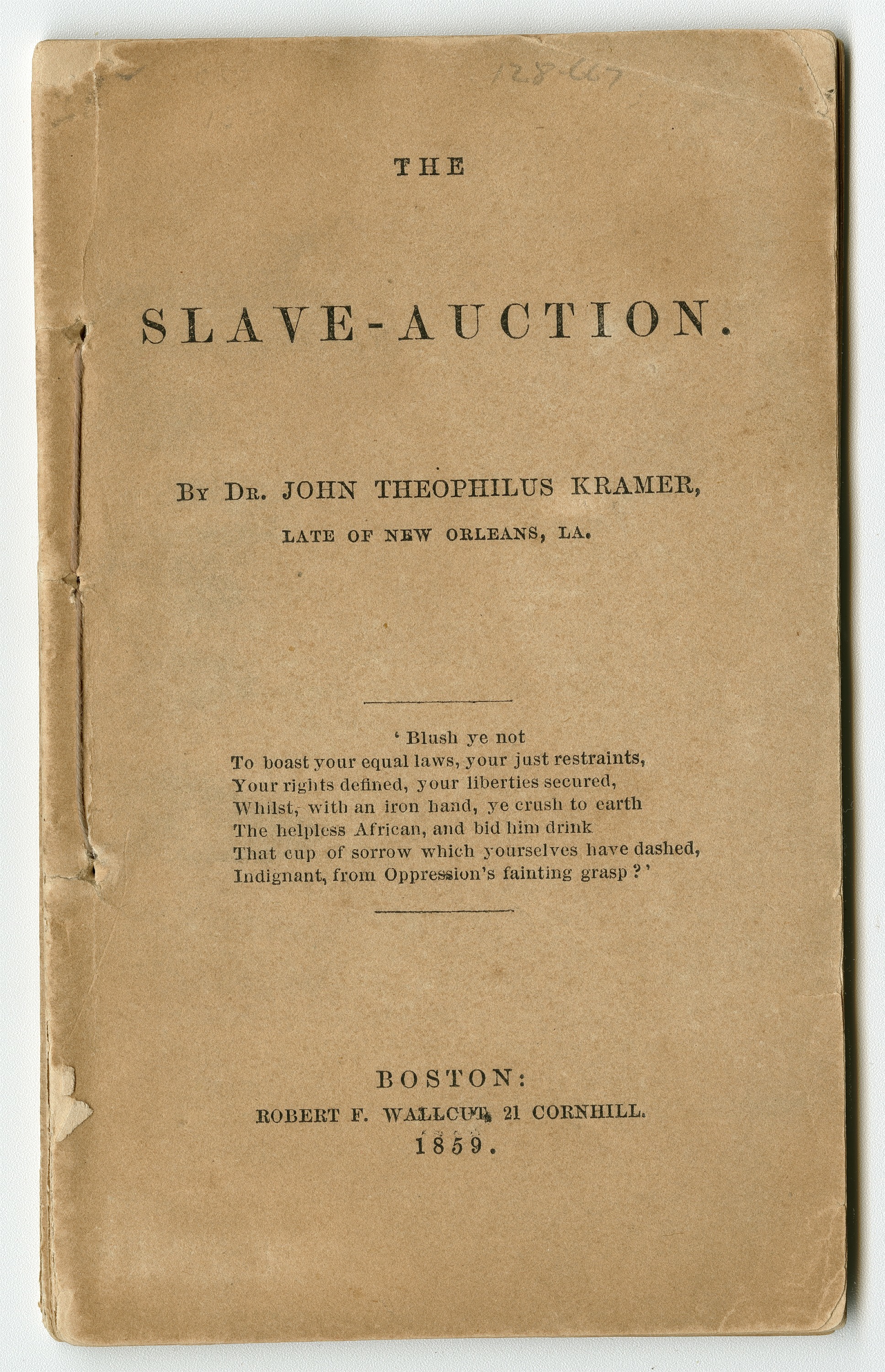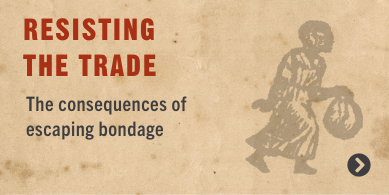Tacked on trees, posted on buildings, and printed in newspapers, advertisements announcing the sale of enslaved men, women, and children were omnipresent in antebellum New Orleans. Though the prevalence of auction-related imagery suggests otherwise, not all sales took place on the auction block. Individuals could be sold via estate, bankruptcy, and succession sales or from seller to purchaser directly from slave pens (private jails owned by traders) or from private residences. Some humans were even raffled off in lotteries.
“I was growed up when the war come. And I was a mother before it closed. Babies were snatched from their mothers’ breasts and sold to speculators. Children was separated from sisters and brothers and never saw each other again. Course they cry; you think they not cry when they was sold like cattle? I could tell you about it all day, but even then you couldn’t guess the awfulness of it.”
—Delia Garlic, from Born in Slavery: Slave Narratives from the Federal Writers’ Project, 1936–1938Those brought to New Orleans over long distances often found themselves corralled into slave pens on arrival, issued new clothing, and readied for sale. Preparations included providing slaves with increased rations and doctors' visits to improve their overall health; mandatory exercise regimens, such as forced dancing, to build and tone muscle; and lessons—backed up with corporal punishment for transgressors—in "looking smart and lively" before prospective purchasers.
“There was in this lot a number of old men and women, some of them with gray locks. … I had to prepare the old slaves for market. I was ordered to have the old men’s whiskers shaved off, and the gray hairs plucked out, where they were not too numerous, in which case he had a preparation of blacking to color it, and with a blacking brush we would put it on.”
—William Wells Brown, from Narrative of William W. Brown, a Fugitive Slave, 1847
The Slave Auction, an 1859 eyewitness account by John Theophilus Kramer, has been fully digitized by the Internet Archive and can be read in its entirety here.

Sale of Andrew, aged twenty-five, by Isaac Franklin of Sumner County, Tennessee, to Lizzardi y Hermanos of New Orleans
December 7, 1830
THNOC, 60-26-L.28

Advertisement offering "Cash for 500 Negroes" placed by Franklin and Armfield
from the Daily National Intelligencer (Washington City, DC)
June 11, 1836
THNOC, 79-95-L.13

J.A. Beard and May auction notice for a "Valuable Gang of Georgia and South Carolina Field Hands"
New Orleans: Bulletin Print, 1856
THNOC, 2014.0371

A Slave-Pen at New Orleans—before the Auction
wood engraving from Harper's Weekly
January 24, 1863
THNOC, 1958.43.24

The Slave Auction
by John Theophilus Kramer
Boston: Robert Folger Wallcut, 1859
THNOC, 76-113-RL

